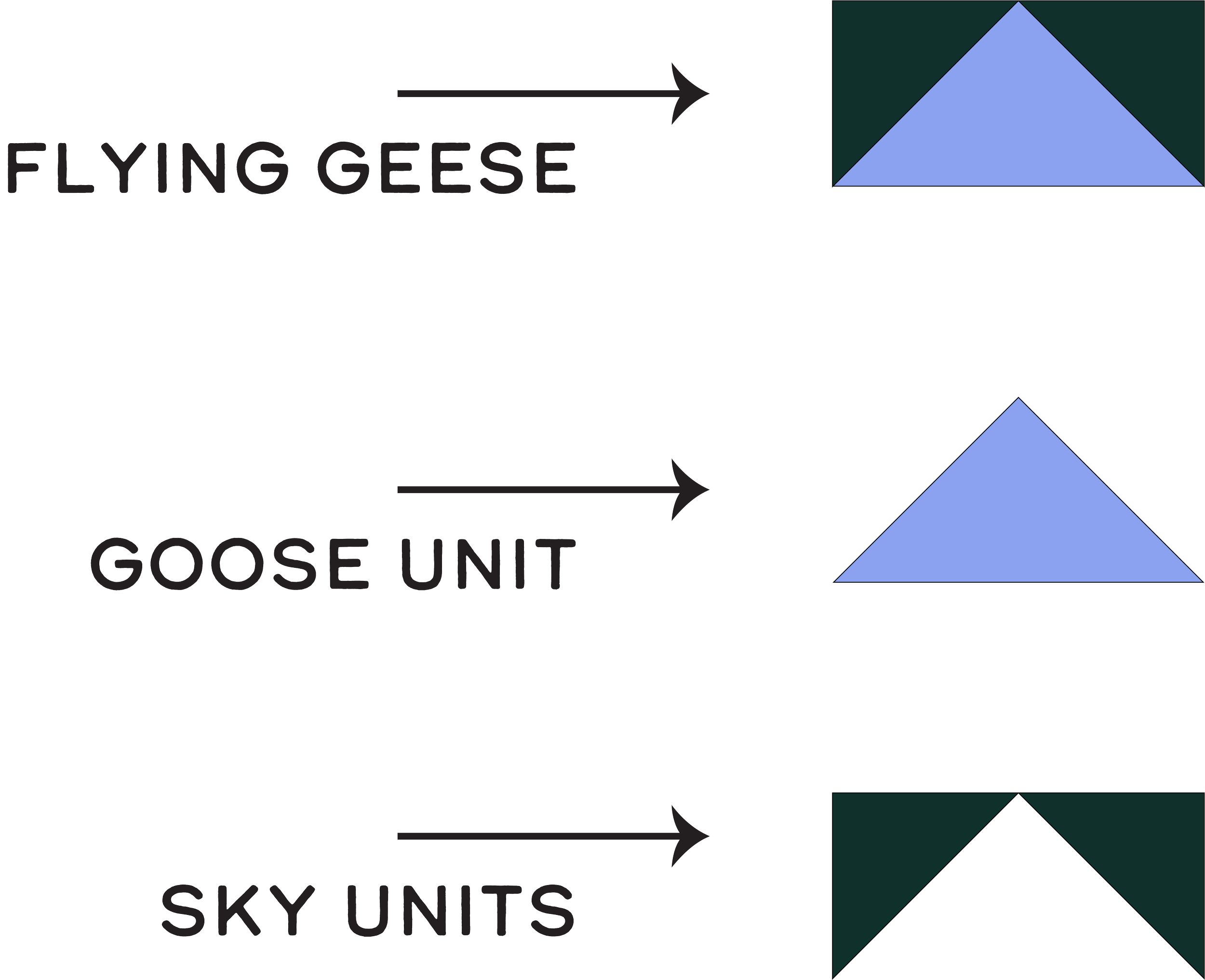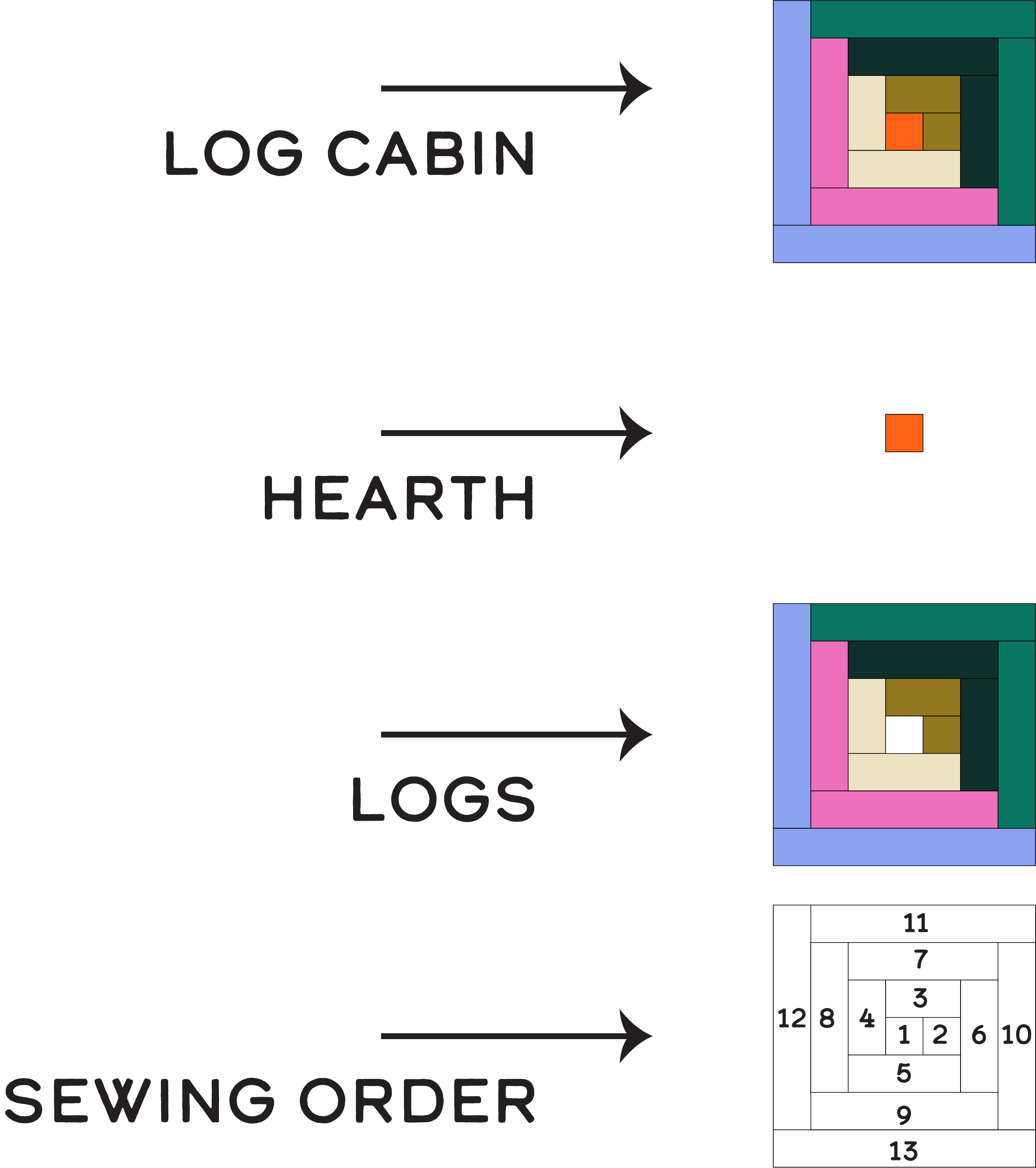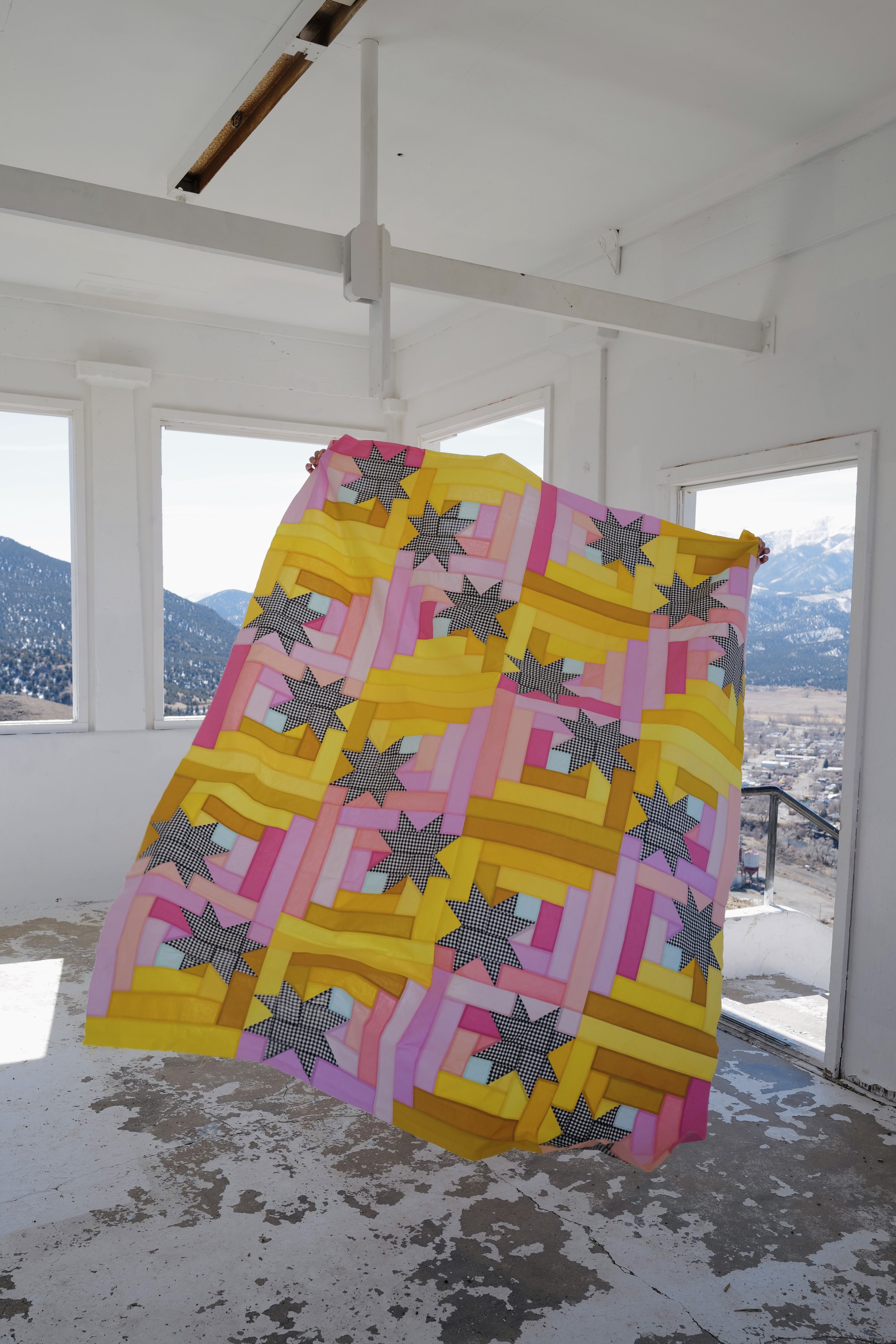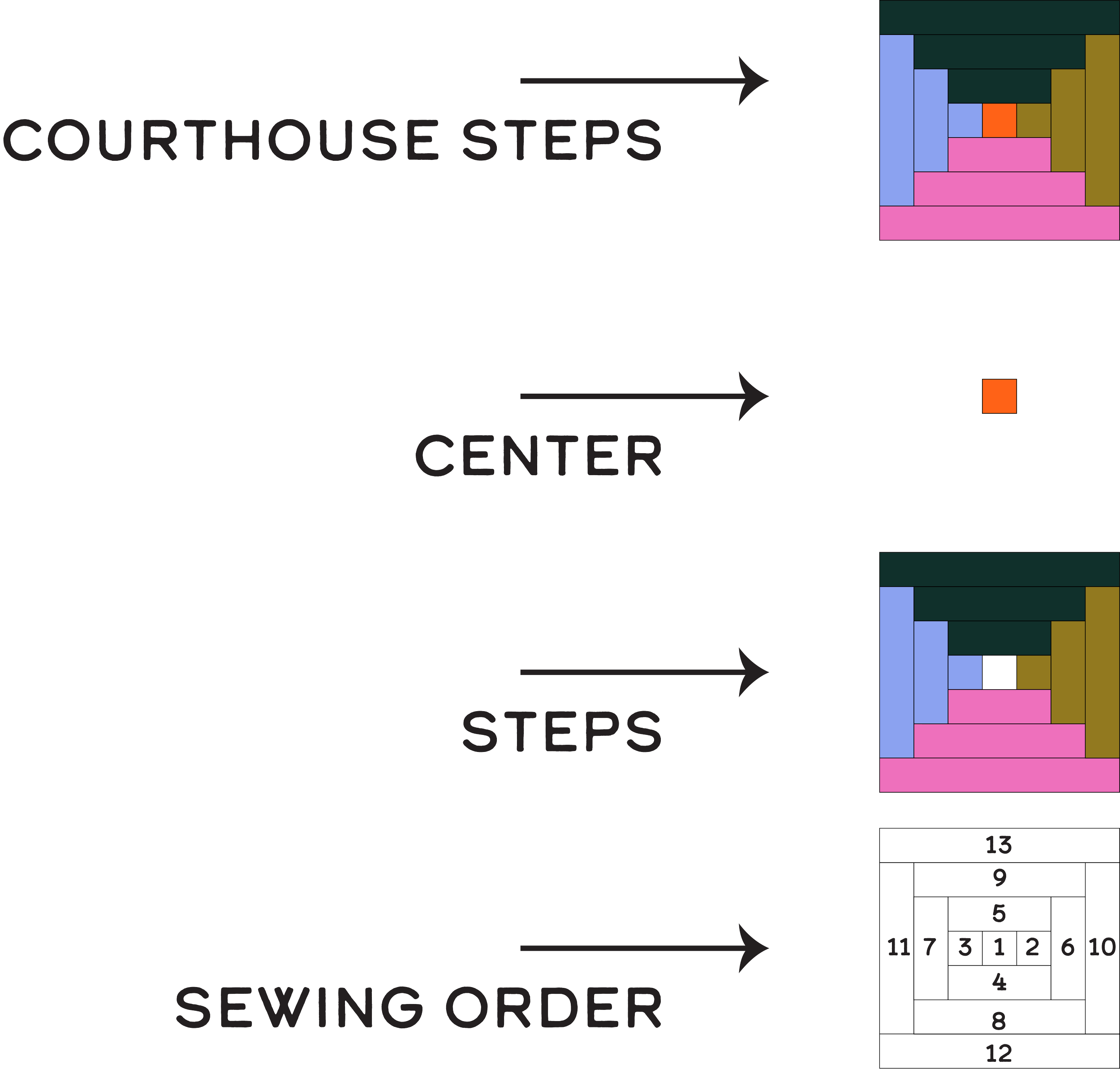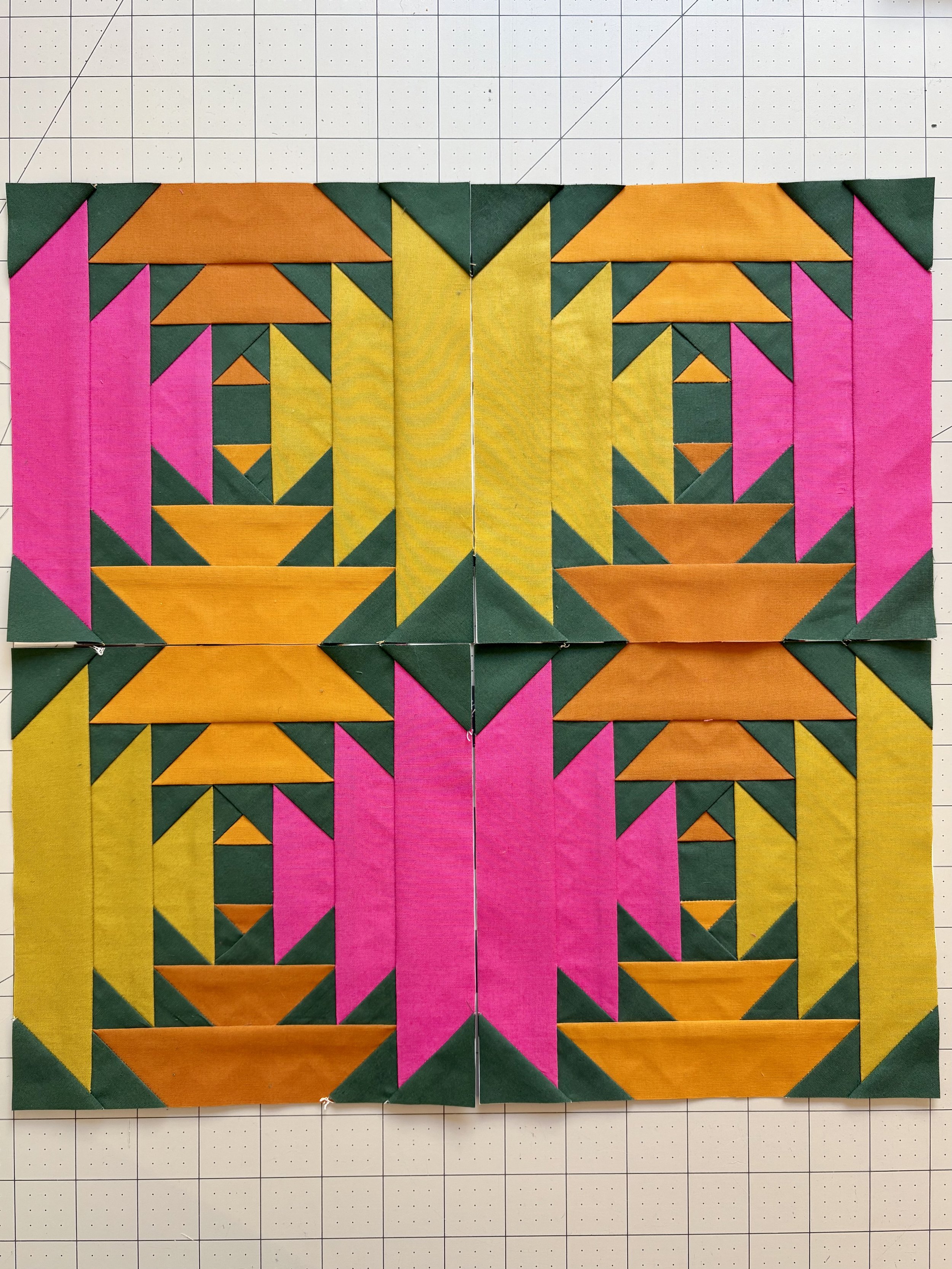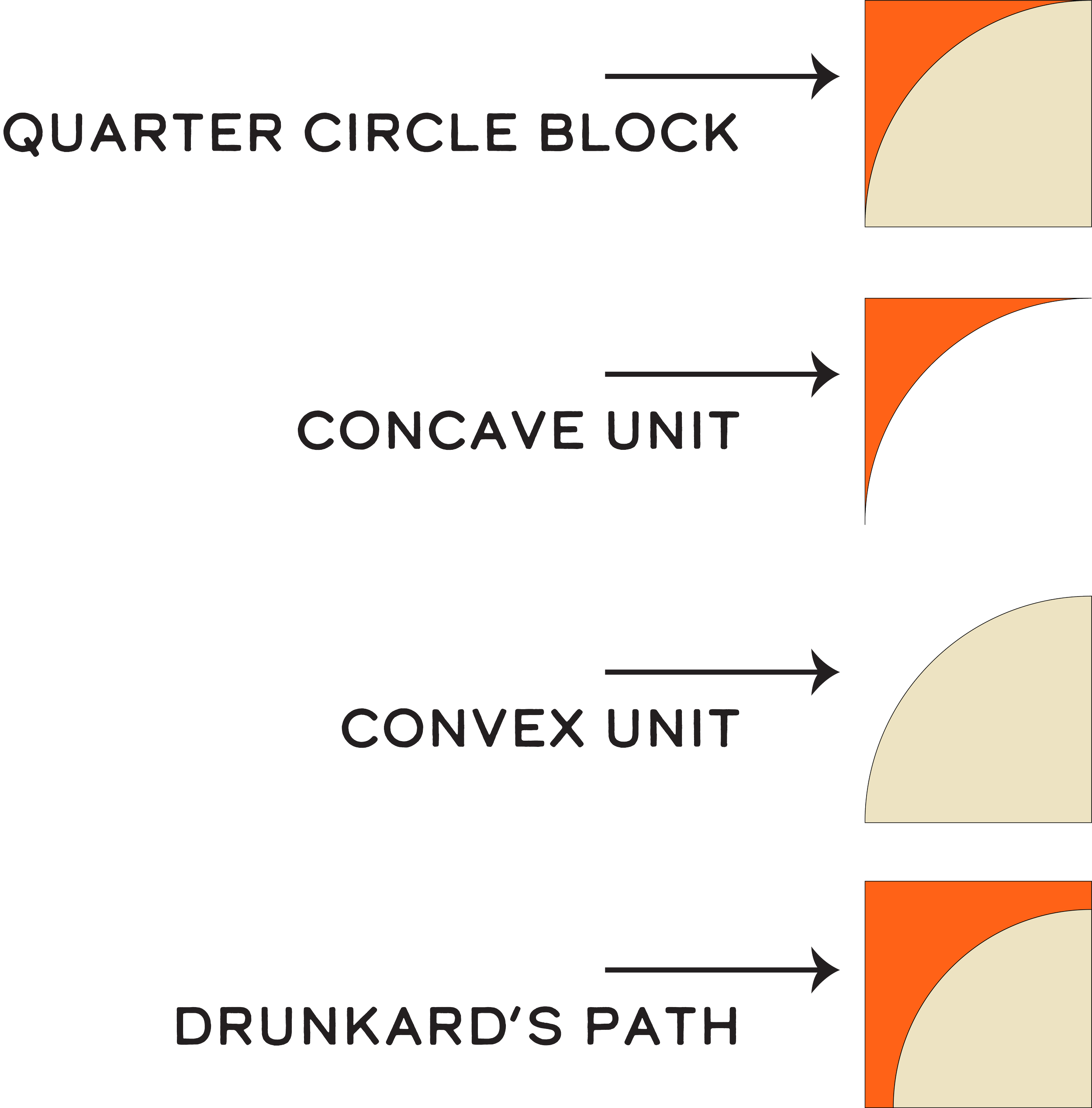Anatomy of Common Quilt Blocks
Newbie and experienced quilters can be forgiven for calling the same quilt block, and its components, by many different names. For the majority of quilters, their knowledge has come from their immediate family members and community. Whatever words your community uses to describe quilt blocks is what makes the most sense to you. With an increasing number of us learning from online, virtual communities, these geographically and culturally distinct names are commingling and colliding in new ways.
I know I’ve been confused by all the information I’ve learned online. Are quarter circle blocks the same as drunkard’s path blocks? What’s the difference between a courthouse step block and a log cabin block? If these questions keep you up at night, I’m here to help. Below, I’ll show you the various parts and names of six common and traditional quilt blocks. Then I’ll show you some modern twists I’ve put on these classic designs.
Flying Geese
Flying geese blocks can be made from half square triangles, but most quilters I know prefer to make them from one rectangle and two squares. This eliminates the center seam, which reduces bulk and saves fabric waste. The goose of the block is the middle triangle, and the side triangles are the sky.
I know some people prefer to think of the sky triangles as the wings, but I prefer to picture the block as we see geese fly overhead. The goose belly is the center triangle and they are framed by an expansive, open sky!
A Modern Flying Geese Quilt Example
The Sharrow quilt was the very first pattern I wrote. I wanted to design something bold and geometric. The final design was inspired by sharrow road signs, which indicate that the road is to be shared by cars and bikes alike. I also wanted something that only uses three fabrics, so I wouldn’t have to make to many fabric decisions.
Log Cabin
A log cabin quilt block is sewn by sewing strips of fabric around a center square. The center square is traditionally red, to represent the hearth of a home. The strips of fabric sewn around the hearth represent the logs, mirroring the interlocking construction of a log cabin. Traditionally, the log cabin block uses three colors: red for the center, light fabrics on one side, and dark fabrics for the other. I’ve read that the light and dark fabrics represent the sides of the house in light and in shadow during a sun rise or set.
You can sew in a clockwise or counterclockwise direction, it doesn’t matter. This illustration shows a counterclockwise sewing order.
A Modern Log Cabin Quilt Example
When I designed the Constellation Cabin quilt I wanted to incorporate a vision of a night sky and solitary log cabin in the woods. The resulting quilt combines a constellation of sawtooth stars across a traditional log cabin block! I ended up using bright pinks and yellows instead of nighttime colors, but I just love the playful, cheerful result. Plus, I made the block extra big (14" x 14") and jelly roll friendly so that it stitches up in no time.
Courthouse Steps
The courthouse steps block represents another traditional building. This block uses five, four or three colors. I think of the center block as the dome of a municipal building, with the steps wrapping around the east, west, north and south sides of the building.
The construction varies slightly from the log cabin. Instead of sewing around the center block, the courthouse steps are sewn to the east and west sides, then the north and south sides of the block. This constructions reflects the grand steps that often lead to courthouse doors.
A Modern Courthouse Steps Quilt Example
The Alma quilt block is a foundation paper pieced block that lives somewhere between a courthouse steps block and a pineapple block. It keeps the traditional assembly method of sewing to the east, west, north and south sides, but turns the center unit into more of a background fabric. The real magic of the block comes when you make multiple blocks and stitch them together!
Quarter Circle
The quarter circle block is made of two units: the concave unit and the convex unit. If you have trouble remembering which is which, just remember that the concave unit looks like a cave ceiling.
Very often, I hear quilters refer to this block as a drunkard’s path block. I tend of think of drunkard’s path blocks as the bottom illustration. In this block, the convex unit does not reach to the edges of the block, leaving background fabric at the sides.
A Modern Quarter Circle Quilt Example
The Grandma Core quilt combines my love for quarter circle blocks and checkerboard patterns. By extending the checkerboard across the convex and concave units, you get these 70’s inspired flowers that puzzle piece together across the quilt top.
Orange Peel
The orange peel block is a natural evolution of the quarter circle block. I feel like we’re really mixing up our fruits here. A block named after a citrus fruit, but the center unit is a melon, and is named after a berry fruit! Whatever it’s called, this block is absolutely scrumptious.
A Modern Orange Peel Quilt Example
I love the look of an orange peel block, and in typical Erin-fashion, couldn’t help putting a modern spin on it. In the Folks Hearts quilt, I introduce a new orange peel technique that adds incredible visual interest. Throw in some delicate sashing and scrappy cornerstones, and each block really has a chance to shine across this quilt top.
Double Wedding Ring
The matriarch of traditional quilts, the double wedding ring, has many different and distinct components. Each individually cut piece has its own name, and as each unit is sewn together, the units are renamed. For example, once wedges are sewn together, they form an arc. When an arc and a melon are sewn, they form a half melon arc, etc.
A Modern Double Wedding Ring Quilt Example
Traditionally, an arc is made of an even number of wedges, however when I designed the Circus Ring quilt, I wanted to update this traditional design with an odd number of wedges. The Circus Ring quilt is a perfect practice pattern for quilters who have a double wedding ring on their bucket list of quilts. You’ll get all the practice of a double wedding ring, without the commitment of a full quilt.

